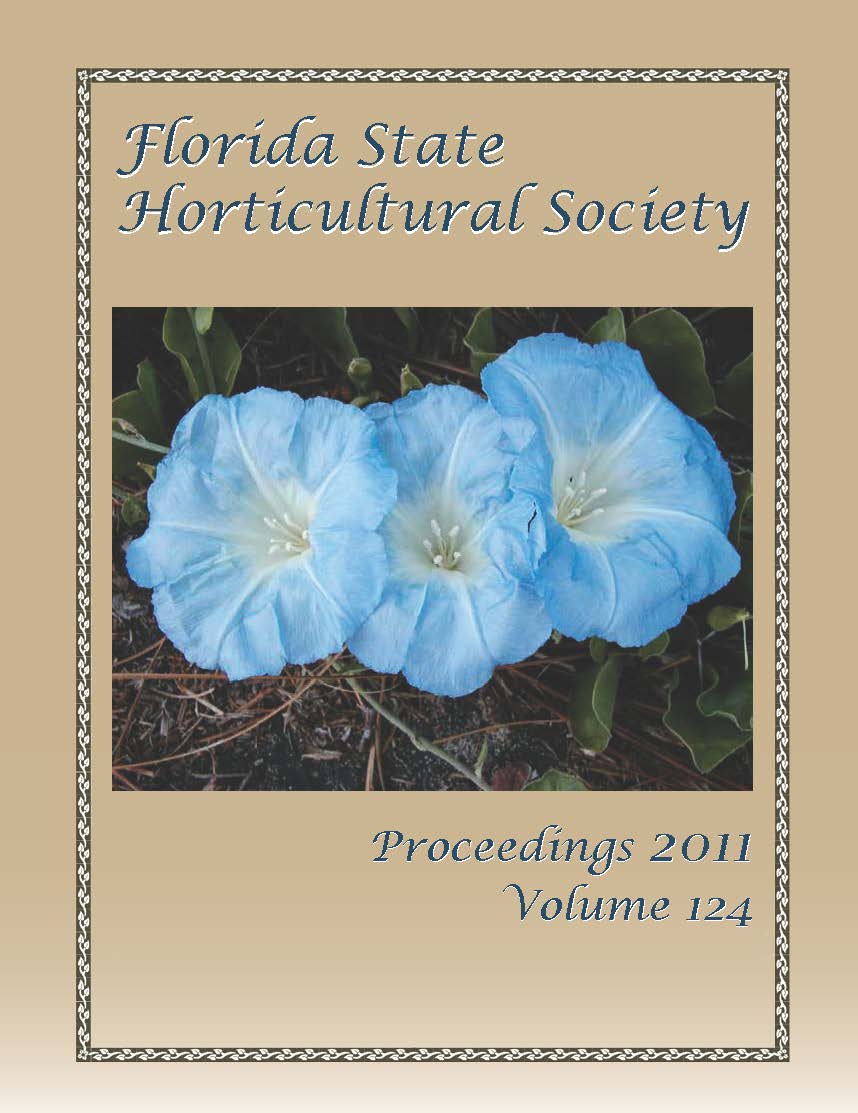Published 2011-12-01
Keywords
- advanced production systems,
- allotetraploid,
- citrus breeding,
- high density planting,
- protoplast fusion
Abstract
New citrus production systems that feature high density plantings being developed and adapted for Florida growing conditions will require improved tree-size controlling rootstocks that bear early and produce good yields of fruit with juice of high quality. Flying Dragon [Poncirus trifoliata(L.) Raf.], the standard dwarfing stock of the industry, grows slowly in the nursery and generally does not yield adequately. Improved alternative rootstock choices are desirable. Tetraploid rootstocks, both autotetraploids and allotetraploids, have been shown to have a capacity to reduce tree size when budded with commercial diploid scions. We have been exploring somatic hybridization of complementary diploid rootstocks via protoplast fusion to generate allotetraploid rootstock candidates for many years. Our early work featured production of somatic hybrids of many complementary rootstock combinations, including hybrids of sweet orange and mandarins with Flying Dragon. Field testing of such hybrids showed excellent tree size control, good yields, and juice quality; however, there were usually one or more problems with each hybrid, such as inadequate seed production for
standard propagation, or poor tree survival at one or more locations. We have subsequently produced additional somatic hybrids of complementary rootstocks that appear to have solved these problems, which also include parentage for coldhardiness. Although replicated field trials of these somatic hybrid rootstock candidates were destroyed by the state-run canker eradication program, we were able to obtain yield and juice quality data over three consecutive seasons from a small blight tolerance trial in St. Cloud in collaboration with Mr. Orie Lee. Features of five such tree-size controlling somatic hybrid rootstock candidates will be presented, including information on seed production, tree size, yield, and juice quality. For example, the somatic hybrid of ‘Changsha’ mandarin + 50-7 trifoliate orange consistently produces 2.25 boxes of ‘Valencia’ fruit per tree with high juice quality on trees of similar size to those budded to Flying Dragon. These new somatic hybrid rootstocks should have good potential in emerging advanced production systems for Florida.

